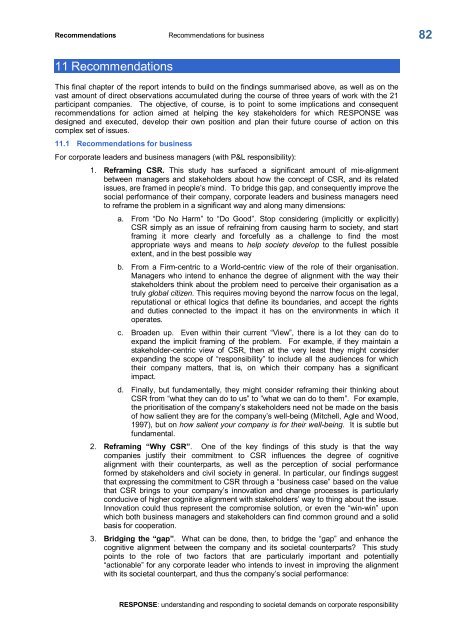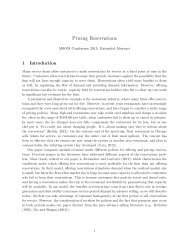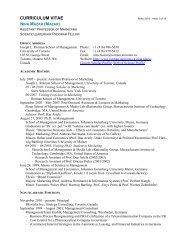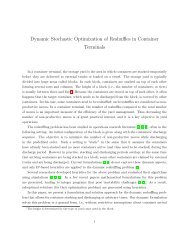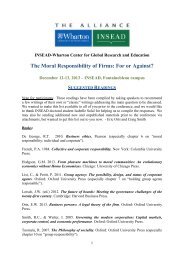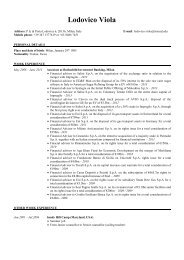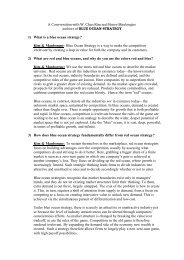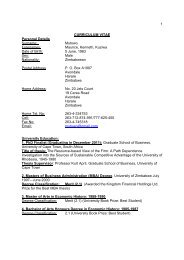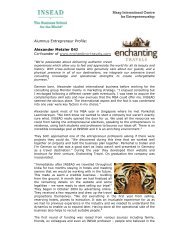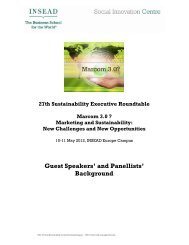RESPONSE - Insead
RESPONSE - Insead
RESPONSE - Insead
You also want an ePaper? Increase the reach of your titles
YUMPU automatically turns print PDFs into web optimized ePapers that Google loves.
Recommendations Recommendations for business<br />
11 Recommendations<br />
This final chapter of the report intends to build on the findings summarised above, as well as on the<br />
vast amount of direct observations accumulated during the course of three years of work with the 21<br />
participant companies. The objective, of course, is to point to some implications and consequent<br />
recommendations for action aimed at helping the key stakeholders for which <strong>RESPONSE</strong> was<br />
designed and executed, develop their own position and plan their future course of action on this<br />
complex set of issues.<br />
11.1 Recommendations for business<br />
For corporate leaders and business managers (with P&L responsibility):<br />
1. Reframing CSR. This study has surfaced a significant amount of misalignment<br />
between managers and stakeholders about how the concept of CSR, and its related<br />
issues, are framed in people’s mind. To bridge this gap, and consequently improve the<br />
social performance of their company, corporate leaders and business managers need<br />
to reframe the problem in a significant way and along many dimensions:<br />
a. From “Do No Harm” to “Do Good”. Stop considering (implicitly or explicitly)<br />
CSR simply as an issue of refraining from causing harm to society, and start<br />
framing it more clearly and forcefully as a challenge to find the most<br />
appropriate ways and means to help society develop to the fullest possible<br />
extent, and in the best possible way<br />
b. From a Firmcentric to a Worldcentric view of the role of their organisation.<br />
Managers who intend to enhance the degree of alignment with the way their<br />
stakeholders think about the problem need to perceive their organisation as a<br />
truly global citizen. This requires moving beyond the narrow focus on the legal,<br />
reputational or ethical logics that define its boundaries, and accept the rights<br />
and duties connected to the impact it has on the environments in which it<br />
operates.<br />
c. Broaden up. Even within their current “View”, there is a lot they can do to<br />
expand the implicit framing of the problem. For example, if they maintain a<br />
stakeholdercentric view of CSR, then at the very least they might consider<br />
expanding the scope of “responsibility” to include all the audiences for which<br />
their company matters, that is, on which their company has a significant<br />
impact.<br />
d. Finally, but fundamentally, they might consider reframing their thinking about<br />
CSR from “what they can do to us” to ”what we can do to them”. For example,<br />
the prioritisation of the company’s stakeholders need not be made on the basis<br />
of how salient they are for the company’s wellbeing (Mitchell, Agle and Wood,<br />
1997), but on how salient your company is for their wellbeing. It is subtle but<br />
fundamental.<br />
2. Reframing “Why CSR”. One of the key findings of this study is that the way<br />
companies justify their commitment to CSR influences the degree of cognitive<br />
alignment with their counterparts, as well as the perception of social performance<br />
formed by stakeholders and civil society in general. In particular, our findings suggest<br />
that expressing the commitment to CSR through a “business case” based on the value<br />
that CSR brings to your company’s innovation and change processes is particularly<br />
conducive of higher cognitive alignment with stakeholders’ way to thing about the issue.<br />
Innovation could thus represent the compromise solution, or even the “winwin” upon<br />
which both business managers and stakeholders can find common ground and a solid<br />
basis for cooperation.<br />
3. Bridging the “gap”. What can be done, then, to bridge the “gap” and enhance the<br />
cognitive alignment between the company and its societal counterparts? This study<br />
points to the role of two factors that are particularly important and potentially<br />
“actionable” for any corporate leader who intends to invest in improving the alignment<br />
with its societal counterpart, and thus the company’s social performance:<br />
<strong>RESPONSE</strong>: understanding and responding to societal demands on corporate responsibility<br />
82


